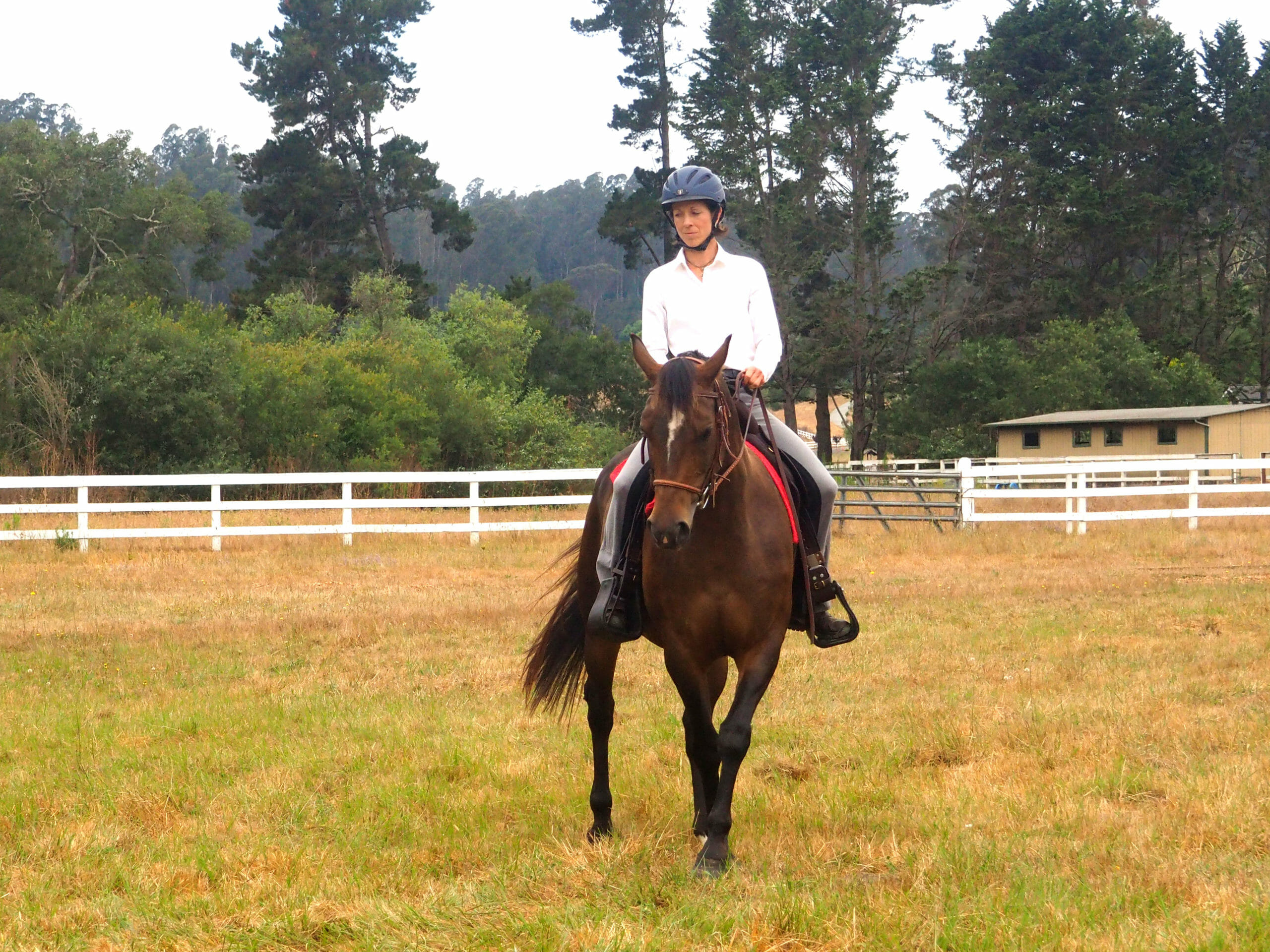WALKING CAN BE THE CURE – PART 1
BY JEC BALLOU
Inactivity sometimes plays a larger role in creating poor muscle patterns than poor training or injuries. When a horse does not move sufficiently throughout the day as nature intended, circulation of blood, oxygen, and lymph diminishes. This translates to sluggish, unfurled muscles and dehydrated or non-gliding tissues surrounding them. Over time, this creates ingrained restriction in an animal’s range of motion.
WHY DO WALK WORKOUTS?
Too many of us overlook the value of schooling at the walk, thinking that there is not much to accomplish. Walk workouts do not improve cardiovascular fitness, but cardio plays a minimal role in horses’ mechanics and movement patterns. Walk workouts do mobilize the horse’s spinal joints and increase stimulation of highly innervated postural muscles.
It is also especially worth noting that the equine lymphatic system lacks a central pump. Lymph circulation relies instead on muscular contractions and peristaltic pulsations from the digestive tract. The lymphatic system helps maintain fluid balances between blood vessels and tissues, which is crucial for not only movement by immunity and injury repair.
PREVENTING TENSION AND ACHIEVING MORE RANGE OF MOTION
Work at the walk, practiced and touted by old classical dressage masters, is always better than letting a horse stand around when for whatever reason he is not able to perform a regular training schedule. Walking allows for full contraction of the long back muscles in a contraction-relaxation cycle that prevents tension. Further, the fine-tuned motor control that is possible at the walk enables riders to help their horses find more range of motion and joint flexion that will become habitual.
WALK ROUTINES
During periods of reduced exercise due to weather or time constraints, riders can accomplish a great deal in 25 minutes with one of the following walk routines. Within each routine below, spend about two minutes on each exercise and continue to cycle through them like a circuit until your time is up.
Walk Routine #1
For 25 minutes do the following continuous circuit:
- Long and Low Transitions: With the horse in a long and low stretched frame, ride transitions from working walk to extended walk; repeat. Aim to keep his head and neck reaching down low toward the ground into a light rein contact during these transitions. He will need to recruit core muscles for balance.
- Polish your Turns: Interspersed with intervals of active, ground-covering walking, practice several turns-on-the-forehand and turns-on-the-haunches in each direction. Be sure to ride several energetic walk steps between each turn.
- Proprioception Box: Arrange a box on the ground using four ground poles touching at the corners. Ride a variety of patterns over and through the box— cloverleaf, circle around each corner, figure of eight, etc.
About Jec Ballou
“I was raised in a horse training family in Vermont, studied dressage throughout Europe and eventually settled in California. About 15 years ago, I realised that most of the problems riders struggled with stemmed from their horses not using their bodies well. They lacked the strength or coordination, they had muscle imbalances, they were stiff and so on. Meanwhile, horse training had become too specialized and way too complicated. We need simple, straightforward tools to help horses use their bodies optimally. This prompted me to write my first book in 2005, 101 Dressage Exercises for Horse and Rider, which was endorsed by the United States Dressage Federation as critical for every rider to own. Three other books followed, all of which have been translated to foreign languages and widely trusted around the world for helping horses regain freedom of movement, an enjoyment of exercise and strong bodies. I continue to study with a tireless passion in order to assist equestrians worldwide with the goal of resolving limitations for their four-legged friends and giving them fuller lives.”
EQUITOPIA MEMBERS MAY VIEW PART TWO OF THIS POST, WHICH EXPLAINS TWO FURTHER ROUTINES AND A VIDEO SHOWING A TURNS EXERCISE




